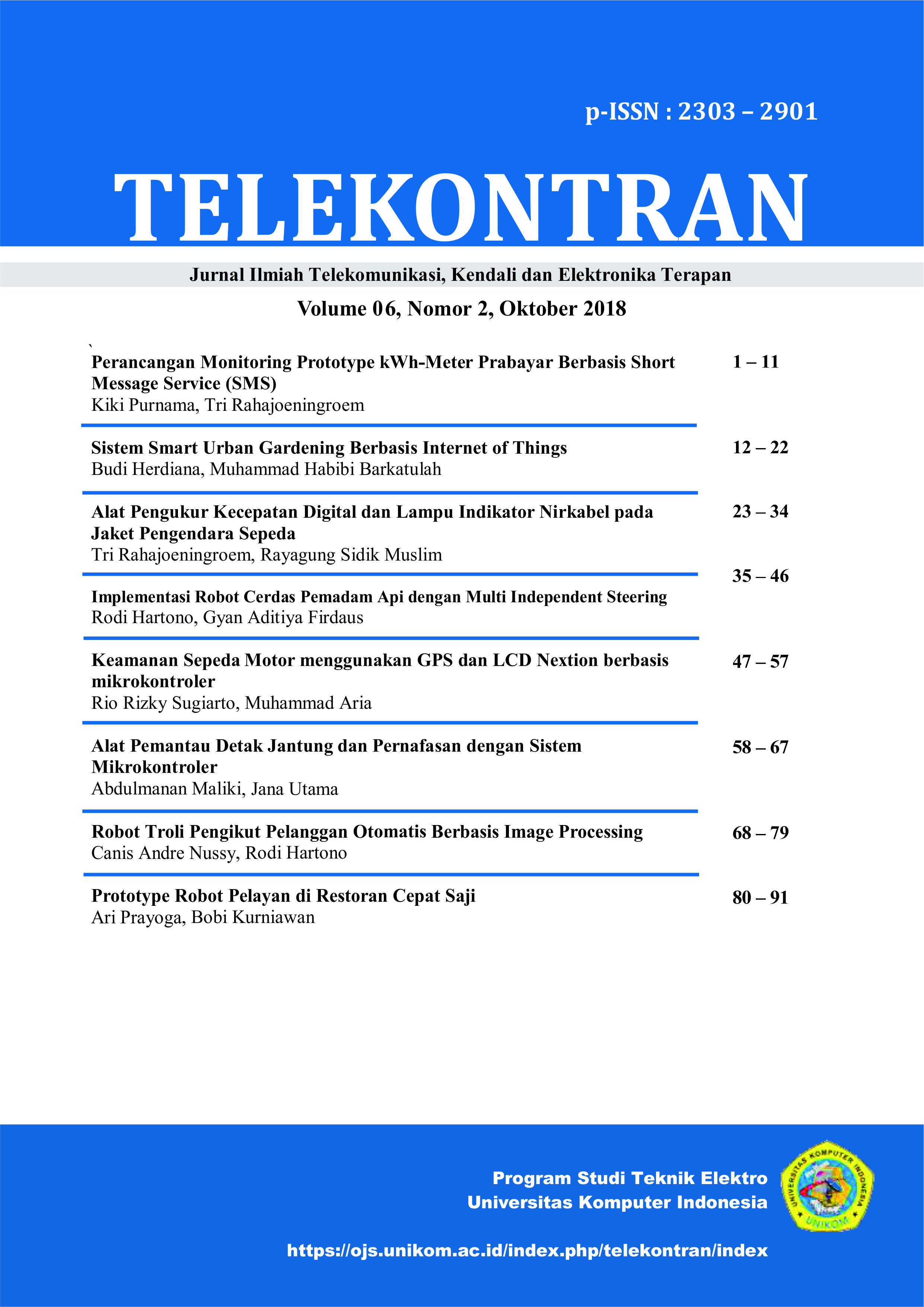Prototype Robot Waiter at Fast Food Restaurants
Main Article Content
Abstract
Abstract - On this day basic human needs are increasing. One example of this can be seen in terms of food, which until now has always been a major need. Fast food restaurants are in great demand by the public because cooking does not require a long time and so that many benefit from the presence of fast food restaurants. To improve service at fast food restaurants espesially for a waiter to efficient in providing food to customers we need research to be carried out on the design and implementation of robot servant prototypes in fast food restaurants automatically. This paper discusses the design and implementation of a prototype robot introduction of food at fast food restaurants automatically. The design begins with a prototype robot intended food delivery to customers in fast food restaurants. This robot moves with three wheels (2 front wheels are connected to the DC motor and the first freewheel that is behind) that moves through the track or line of trajectory to deliver food to the customer table. In addition, it is made also prototype restaurant accidentally in your own design and size that has been adjusted so as to simulate a fast-food restaurant. Prototype robot consists of several key components including the photodiode, push button switches, 3x4 matrix keypad, microcontroller AVR ATmega), DC motor driver and DC motor. The photodiode, push button switches and a 3x4 matrix keypad input (input) of the robotic system that will be processed by the microcontroller AVR ATmega 16 and will produce output (output) in the form of control of output devices such as motor driver DC. In this test, this robot can waiter function properly. For one time delivering food it takes 42 seconds to 1.13 minute. There was a time difference from the results of the trial due to a technical error from the robot while on the track.
Keywords: ATmega16, Proportional Integral Derivative (PID), Photodiode Sensors, Robot Waiter
Downloads
Article Details
Section

This work is licensed under a Creative Commons Attribution-ShareAlike 4.0 International license.
